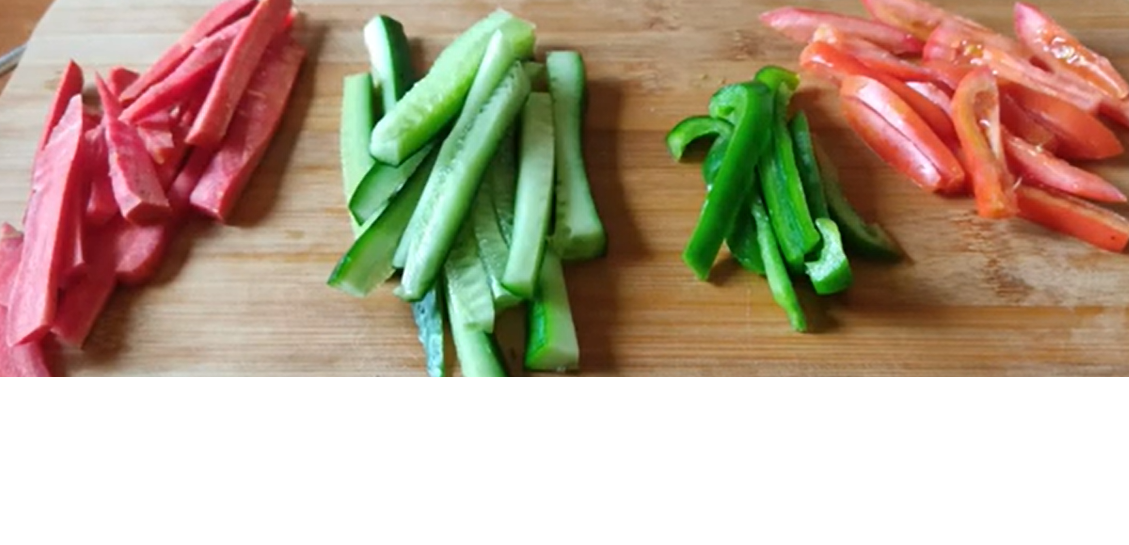Shawarma has become a global street food sensation, renowned for its succulent, flavorful meat, combined with fresh vegetables and savory sauces. Originating from the Middle East, shawarma is traditionally prepared with marinated meat—beef, lamb, or chicken—that is slowly roasted on a vertical spit. In this guide, we’re taking a modern twist by combining chicken and vegetables to create a healthy, delicious, and irresistible shawarma. Perfect for both casual lunches and dinner parties, this recipe is packed with flavor, nutrients, and color, making it a sure crowd-pleaser.
In this comprehensive guide, we’ll explore how to create a perfect Chicken and Vegetable Shawarma at home, using the right marination, the best combination of vegetables, and optimal cooking techniques. Plus, we’ll ensure the article is SEO-optimized for those searching for the best shawarma recipe, healthy shawarma alternatives, or quick Middle Eastern meals.
Table of Contents
- Introduction to Shawarma: History and Popularity
- Benefits of Chicken and Vegetable Shawarma
- Nutritional Value
- Healthier Alternative to Traditional Shawarma
- Key Ingredients for Chicken and Vegetable Shawarma
- Choosing the Right Chicken Cut
- Essential Vegetables for Shawarma
- Spice Mix and Marinade
- The Art of Marination
- Step-by-Step Marination Guide
- How Long to Marinate for Optimal Flavor
- Cooking Techniques: Grill, Pan, or Oven?
- Pros and Cons of Each Method
- Vegetable Preparation: Crisp, Colorful, and Fresh
- The Best Vegetables for Shawarma
- Tips for Roasting or Sautéing Vegetables
- Creating the Perfect Shawarma Wrap
- Choosing the Right Bread: Pita, Flatbread, or Tortilla
- Layering: How to Balance Chicken and Vegetables
- Sauce Choices: Traditional Garlic Sauce, Tahini, or Yogurt-Based
- Serving Suggestions and Side Dishes
- Classic Sides like Hummus and Tabouleh
- Creative Add-ons: Pickles, Olives, and Fries
- Making Shawarma Part of Your Meal Prep
- Storing Leftovers
- Reheating Tips for Best Taste and Texture
- Conclusion: Why Chicken and Vegetable Shawarma Should Be Your Go-To Meal
- Health Benefits Recap
- Final Tips for Customization
1. Introduction to Shawarma: History and Popularity
Shawarma, a Middle Eastern culinary gem, dates back centuries, originating from the Ottoman Empire. The technique of cooking meat on a vertical rotisserie ensures the outer layers are perfectly roasted while the inner portions stay tender and juicy. As shawarma gained global popularity, various regions adapted it to their local tastes, introducing new flavors, marinades, and combinations.
Today, shawarma is enjoyed worldwide in various forms. The traditional shawarma consists of marinated meat served in pita bread, often accompanied by vegetables, pickles, and sauces. However, the chicken and vegetable shawarma offers a healthier twist by incorporating more vegetables, lean protein, and flavorful spices, making it a perfect meal for health-conscious individuals.
2. Benefits of Chicken and Vegetable Shawarma
Nutritional Value
Chicken and vegetable shawarma is a nutrient-dense meal, combining the lean protein from chicken and the vitamins and minerals from fresh vegetables. Chicken is a great source of protein, low in fat (especially when skinless), and packed with essential nutrients like vitamin B6, which is vital for energy metabolism. Vegetables, on the other hand, provide dietary fiber, antioxidants, and micronutrients that are essential for overall health.
Healthier Alternative to Traditional Shawarma
By incorporating vegetables into the shawarma, you not only add texture and flavor but also increase the nutritional value of the meal. Reducing the meat content and replacing it with roasted vegetables also reduces the calorie count, making it a more balanced and lighter option compared to the meat-heavy traditional shawarma. Additionally, grilling or baking the chicken and vegetables reduces the need for excess oil, further enhancing the health profile of the dish.
3. Key Ingredients for Chicken and Vegetable Shawarma
Choosing the Right Chicken Cut
For shawarma, chicken thighs are often preferred for their juiciness and flavor, but chicken breasts are a leaner option. Skinless, boneless chicken thighs retain moisture better during cooking, ensuring that the shawarma remains tender and succulent. Chicken breasts can also work well if marinated properly to prevent dryness.
Essential Vegetables for Shawarma
The vegetables chosen for this recipe not only enhance the flavor but also add color and crunch. Common vegetables used in shawarma include:
- Bell Peppers: Red, yellow, and green peppers bring sweetness and a vibrant hue.
- Onions: Sliced onions caramelize beautifully when roasted, adding a sweet-savory note.
- Tomatoes: Fresh or lightly roasted tomatoes provide moisture and acidity.
- Cucumber: Adds a refreshing crunch.
- Lettuce: Offers a cool contrast to the warm, spiced chicken.
- Carrots: Thinly sliced or julienned carrots add sweetness and crunch.
Spice Mix and Marinade
The marinade is where the magic happens. A blend of Middle Eastern spices is essential to capture the authentic shawarma flavor. Key spices include:
- Cumin: Earthy and warm, cumin is a must in shawarma marinades.
- Paprika: Adds smokiness and a hint of heat.
- Turmeric: For color and a subtle earthy flavor.
- Cinnamon: A touch of sweetness that balances the savory spices.
- Garlic: Fresh or powdered garlic for pungency.
- Lemon Juice: For acidity and to tenderize the chicken.
- Olive Oil: Helps bind the spices and keeps the chicken moist.
4. The Art of Marination
Step-by-Step Marination Guide
- Prepare the Chicken: Cut chicken thighs or breasts into thin strips for quicker cooking and better marinade absorption.
- Mix the Marinade: Combine cumin, paprika, turmeric, cinnamon, garlic, lemon juice, olive oil, salt, and pepper in a bowl.
- Coat the Chicken: Massage the marinade into the chicken strips, ensuring every piece is well-coated.
- Rest Time: For best results, marinate the chicken for at least 4 hours or overnight. This allows the flavors to penetrate deeply into the meat.
How Long to Marinate for Optimal Flavor
While a minimum of 4 hours of marination will yield good results, marinating overnight (8–12 hours) will provide the most flavorful and tender chicken. The lemon juice in the marinade helps tenderize the meat, while the spices infuse their flavors.
5. Cooking Techniques: Grill, Pan, or Oven?
Shawarma is versatile and can be cooked using various methods based on your preferences and available equipment.
Grilling
Grilling is the most authentic method, providing a smoky flavor and crispy exterior. Cook the marinated chicken on a preheated grill for 5–7 minutes per side or until the internal temperature reaches 165°F (75°C).
Pan-Searing
For an indoor alternative, pan-searing the chicken in a hot cast-iron skillet works well. Add a little olive oil to the pan and cook the chicken strips until golden brown on both sides.
Baking
Baking the chicken in the oven is another easy option. Lay the marinated chicken on a baking sheet and roast at 400°F (200°C) for 20–25 minutes, flipping halfway through.



primer-8